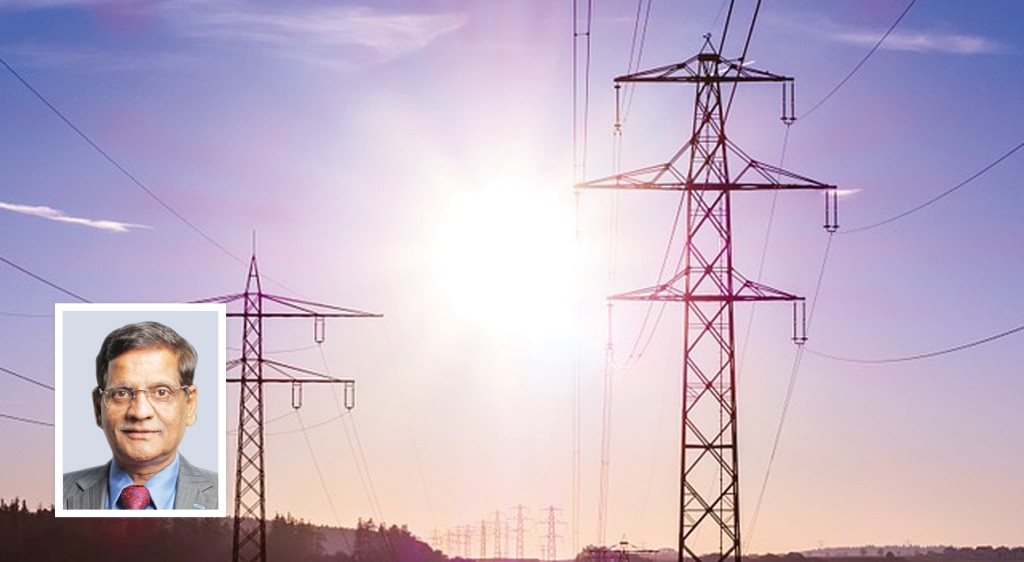Electric vehicles will change the way we consume energy: IEEMA
By EPR Magazine Editorial November 29, 2017 5:09 pm IST
By EPR Magazine Editorial November 29, 2017 5:09 pm IST

The government has announced several initiatives to revive the power sector since the time has come into power. Have these initiatives started delivering?
Today adequate power is available in the country to meet the demand of power of the consumers who are having access to electricity. Moreover the reforms in the sector today are recognised by all across the globe. From ranking 99th at the global level in 2014 in terms of electricity accessibility ranking, India today has come up many notches and is sitting at the 26th spot.
The largest contributor in India’s power reforms story is the government’s Ujwal DISCOM Assurance Yojana or UDAY scheme for turnaround of state distribution entities that were considered as the weakest link in the entire chain of power sector reforms. The scheme has been designed in such a way so as to strike at the heart of the issues bugging the whole sector – the inefficient operation of the power distribution companies. Every aspect of the power sector performance is now mostly available on a tap on a mobile phone through various apps being developed by the ministry. This is a far improved scenario in a sector which was known for its bureaucratic and opaque functioning.
Could you single out one particular initiative that will change the game in 2017?
It is difficult to single out an initiative as so much has been happening in the power sector. The government’s focus on electric vehicle will definitely be a game changer in the coming years, which will transform the way we consume energy. In the coming year we will witness the benefits of GST in India. Saubhagya Yojana, announced by the Prime Minister, in September this month, is going to be big game changer. The government will be spending Rs 16,000 crore and will give connection to 40 million people and when 40 million people will start consuming electricity, the total business for electrical sector may cross Rs 50,000 crore which going to be biggest game changer.
What are the major changes observed during the past one year as far as improving the health of the industry is concerned?
In view of the growing need of the Indian economy, the Indian government has embarked upon a massive programme to provide 24×7 power across the country by 2019. After the completion of half of its term, the government has achieved many important milestones in the power sector. Special focus has also been given to North-East by giving approval to the North Eastern power system improvement project and comprehensive scheme for strengthening of transmission and distribution in the North Eastern states.
Several landmark decisions have already been taken in thermal power generation, hydel and more importantly in solar, wind and other green energy, besides strengthening of transmission and distribution, separation of feeder and metering of power to consumers. These also include not only achievements in capacity addition but also important reforms being undertaken on increasing energy efficiency of the present infrastructure and thereby reducing power losses.
As per the latest IIP data, the industry group ‘manufacture of electrical equipment’ has recorded (-) 11.1% negative growth in July. Your comments?
The growth in the industrial output in recent months is majorly realised due to push up in the government spending and core sector. With speculation of increase in prices post the implementation of Goods and Services Tax (GST) major offloading of inventories took place in the month of June.
How has the demonetisation hampered growth?
What do you see the biggest challenges facing the electrical equipment industry?A significant amount of imports is happening from our neighbouring country with whom our relationship is less than cordial. Presently Indian electrical equipment industry is sitting on an estimated 40 per cent underutilised capacity and can easily meet the demand even without imports from country with suspect relationship. The government has been aggressively using various trade defence action measures to provide level playing field to Indian industry. However, it must try to regularly check whether such imports are happening due to unfair trade practices.
How has the commodity price inflation impacted on the electrical equipment industry?
Commodities are key input raw material impacting the cost of production. Every variation positive or negative has direct impact on the profitability of the industry. The last year has seen all major commodities such as copper, aluminium, zinc fluctuate but CRGO has witnessed some form of stability. The industry also pressured by fluctuating demand, increasing labour cost and allied factors impacting profitability and sustenance has definitely been negatively impacted by the inflation.
How the industry is going to deal with over-capacity?
The only way I see today to deal with the excess capacity within the industry is to focus on export. The Indian electrical equipment manufacturers need to be more export oriented and should try to be more competitive to curb imports.
Where do you see the electrical equipment industry by 2019?
The Government of India has identified the power sector as a key sector of focus to promote sustained industrial growth. The Indian power sector has an investment potential of Rs 15 trillion ($ 237 billion) in the next 2–3 years, thereby providing immense opportunities in power generation, distribution, transmission, and equipment.
By 2022, the installed power capacity in India is expected to reach 350 gigawatts (GW) from 243 GW in 2014, on the back of increasing industrialisation and economic development. The total market size of electrical machinery in India is anticipated to reach $ 100 billion by 2022 from $ 24 billion in 2013.
We use cookies to personalize your experience. By continuing to visit this website you agree to our Terms & Conditions, Privacy Policy and Cookie Policy.